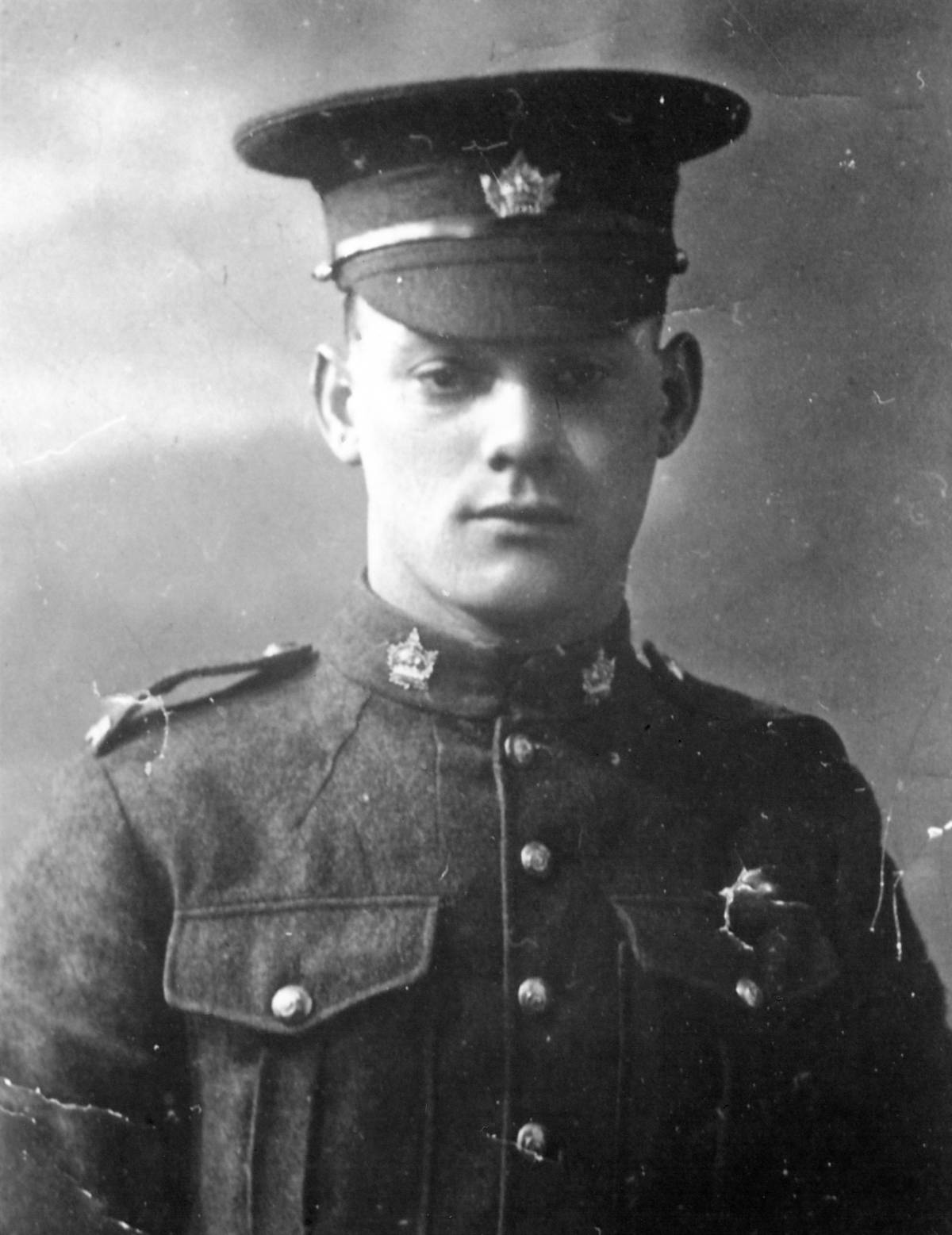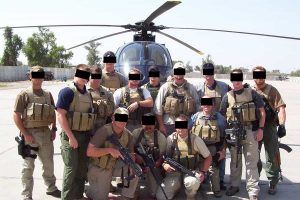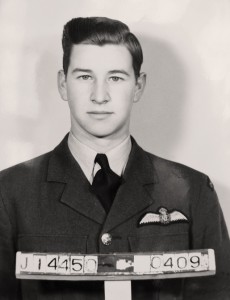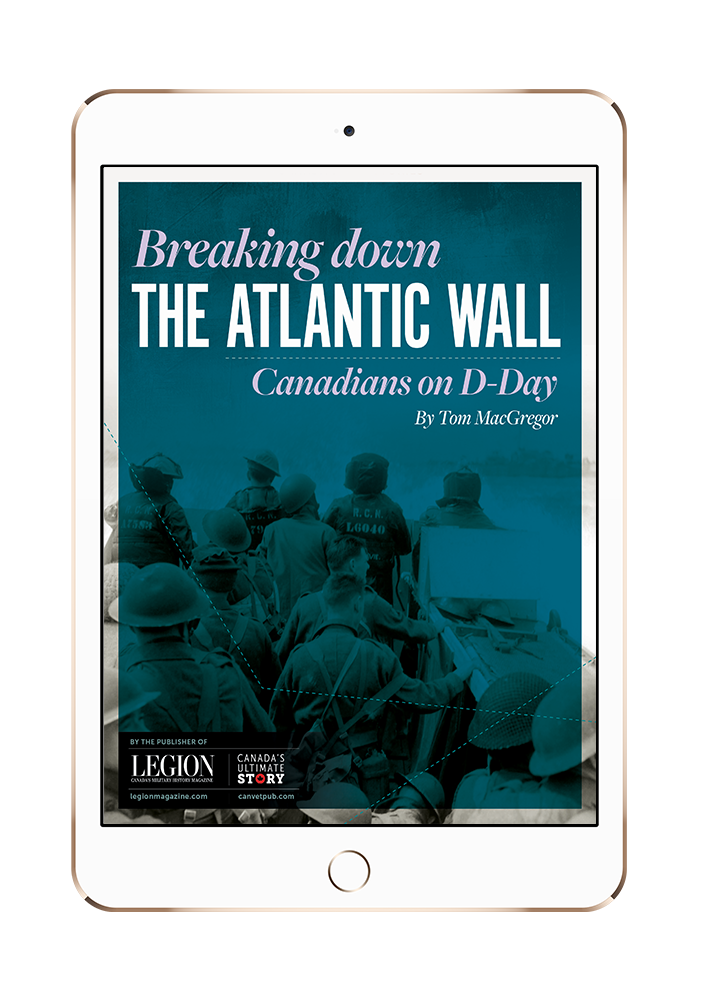No one wants to be the last casualty of war.
It’s an inevitable, inescapable, reality of any conflict where blood has been spilled before, a looming eventuality that a final soldier must fall. It may well be days or hours prior to the end. For Canadian Great War Private George Lawrence Price, it was minutes.
In a sense, the Port Williams, N.S., native’s loss was no different than any that had preceded him. Price wore no Victoria Cross on his chest nor boasted a reputation becoming a glorified retelling in the history books. Prominence instead found the 25-year-old for being in the wrong place at the wrong time on Nov. 11, 1918.
Though not strictly the last Great War casualty, a dubious title held by another, he is believed to be the last Canadian and, moreover, British Commonwealth soldier killed. Here, Canadian War Museum historian Teresa Iacobelli delves into his final moments.
On Price’s early life and military career
We know that Price was born and raised in Nova Scotia. However, during the Great War, he was living in Saskatchewan working as a farm labourer. We also know that before the war, he did have a run-in with the law, serving one month in prison with hard labour for theft due to stealing household goods from his landlady at the time.
Beyond this, we don’t know much more [about his prewar life].
We do know that Price did not volunteer for service in the First World War. Rather, he was conscripted in October 1917, when he was 24 years old. His reason for not enlisting voluntarily is, like much of his life, unknown. Whether there were moral motivations, such as political opposition to the war, or that he felt he could make more money as a farm labourer, or he just wasn’t interested, is mere speculation.
In the end, it doesn’t really matter because he still served and died.
On where Price died
It’s so important to remember the significance of [the Belgian city of] Mons both at the beginning and the end of the First World War. The Battle of Mons was the first major engagement for the British Expeditionary Force in 1914, where the British fought against what was essentially a superior German force at the time. German troops forced a British retreat and occupied the Belgian city for the duration of the war.
By 1918, you have a full circle moment in which the city of Mons becomes one of the last points of the conflict. On Nov. 11, 1918, the last day of the war, advancing Canadians liberated the city, marking the culmination of what we now call the last 100 days, where the Canadian Corps played a critical role in that final Allied push.
In the context of George Lawrence Price, it should be noted that he is among those Canadians fighting in the last 100 days, serving with the 28th (Northwest) Battalion. He fought at Amiens and Cambrai. He was at Canal du Nord. And he even spent a portion of September 1918 recovering from wounds sustained during a gas attack.
On the prelude to Price’s death
There wouldn’t have been one single way that [the Armistice] played out across the Western Front. It would have looked very different depending on where these units were and what their leadership was like. I think there would have been a lot of confusion surrounding that announcement and what it really meant for Canadian formations.
Some were made aware as early as 6 a.m. on Nov. 11 that there was going to be an armistice, and it seems that by around 9:30 a.m., it’s likely that most of these units had learned about it. How much the ordinary German soldier knew is less clear to me. Meanwhile, the 28th Battalion had heard the announcement at roughly 9 a.m.
Whether Price, specifically, received that message is yet another unknown. However, looking at both the battalion war diary and the testimony of a private named Art Goodmurphy, who witnessed [Price’s] death, it would seem for sure that their commanders were aware that an armistice was about to be declared. Personally, I think the announcement would have filtered down to Price.
We also know that with the announcement of the Armistice, Canadian soldiers were instructed to advance until 11 a.m., at which stage they should halt. But within that message, there was a note that battalion commanders had the discretion of how to use those troops, depending on the circumstances at the front. In other words, the sort of risks taken prior to the Armistice were up to those individual commanders.
Goodmurphy reported that the major in charge was incredibly angry after he heard about the useless risk that Price had taken that led to his death. It seems that Price might not have been ordered to go on a reconnaissance patrol, but that he and the entire group of five soldiers had actually taken up the patrol on their own accord.
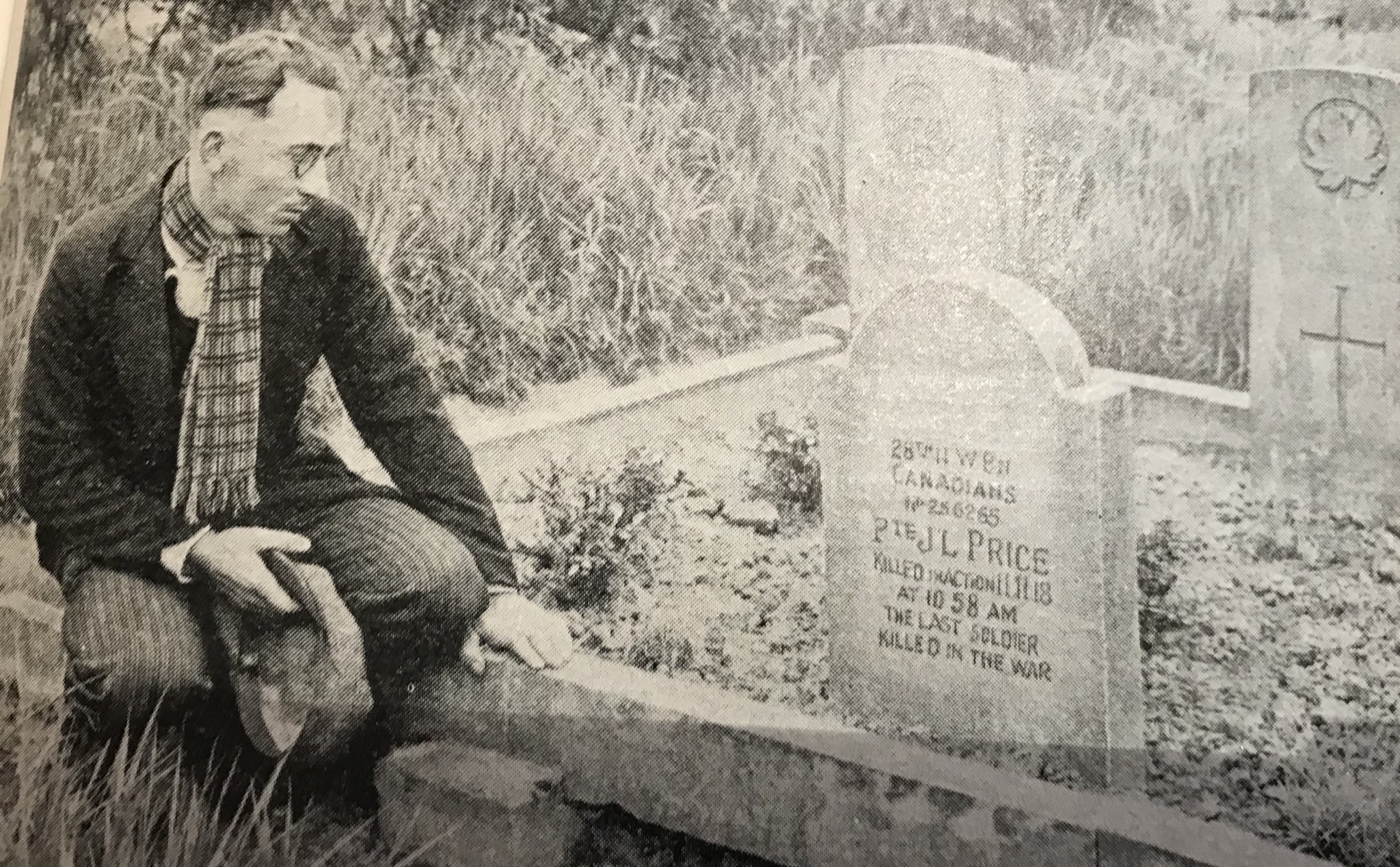
An unknown man pays his respects to Private George Price at his original grave in Havre Old Communal Cemetery northeast of Mons, Belgium. Price’s remains were moved to the city’s St. Symphorien Military Cemetery in 1948. [Canadian Virtual War Memorial]
On how Price died
The battalion war diary does not tell us much at all. It reports him as an unfortunate fatality in the last minutes before the Armistice, yet there is no account of his death. What we know comes from oral testimony, mostly that of Private Goodmurphy.
They had been tasked with securing a bridge over a canal in [what is now] Mons, arriving at it around 9 a.m., and there are accounts that they encountered German machine-gun fire coming from buildings on the other side of the canal. Price and the four other soldiers might have taken it upon themselves to head over and clear these homes.
When they did so, the Germans opened fire and then fled from the buildings. The Canadians pursued them through the streets of Mons, and that’s when Price was shot by a German sniper. A Belgian attempted to provide aid to Price, but it proved useless; he was declared dead at 10:58 a.m. on Nov. 11, 1918, at 25 years old.
On a final fatality after Price
An American soldier name Henry Gunther was killed about one minute later—at 10:59 a.m.—and he is presumed to be the last soldier killed during the Great War.
Before the war, Gunther was a bank employee who had enlisted with the American army in 1917. He had been a sergeant; however, at some stage, he was demoted to private as a punishment for discouraging his friend from enlisting through a letter.
Gunther had died charging a German machine-gun nest. It is even recorded that the Germans [operating the weapon] had tried to wave him away as they had been made aware of the imminent Armistice, but they ultimately fired when he kept charging.
Interviews with his comrades indicate that he had been consumed by his demotion and that he took that action because he was trying to regain his rank. In a sad twist of events, Gunther—who was also of German heritage and might have felt like he had something to prove—was later restored to the rank of sergeant after his death.
On Price’s legacy
Price’s sacrifice has gained attention because he was the last Canadian and the last Commonwealth soldier killed during the Great War. That said, his sacrifice was no greater or no less than any other Canadian soldier who died in that conflict. These were all immeasurable sacrifices, all deaths that impacted both the country overall and reverberated through families, but in Price’s death is something symbolic.
This is solidified by his final resting place at St. Symphorien Military Cemetery, the very same cemetery where the Great War’s first British Empire casualty, John Parr, is buried. So, there’s a certain symmetry, a devastating full circle moment at Mons.
It’s difficult to fathom the sheer amount of loss in the First World War. The number of dead is so large. If you focus on a single story like Price’s, however, it makes it much easier for us to comprehend the sacrifices of all who were ultimately killed.
In a way, knowing the story of one helps us understand the story of all.
This abridged interview has been edited for brevity and clarity.
Advertisement











